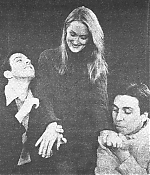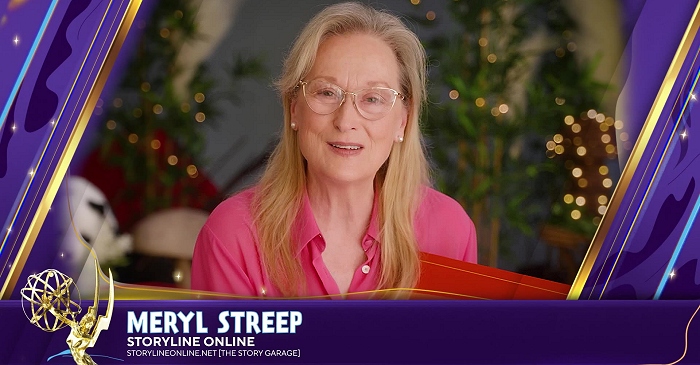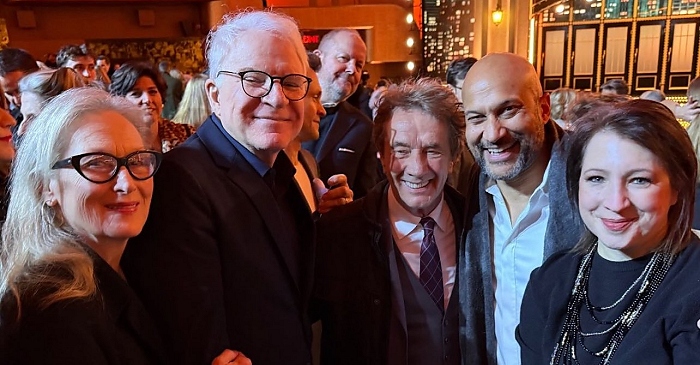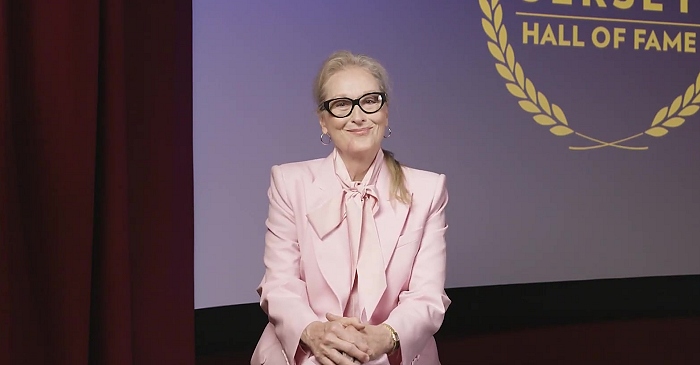|
Simply Streep is your premiere source on Meryl Streep's work on film, television and in the theatre - a career that has won her the praise to be one of the world's greatest working actresses. Created in 1999, we have built an extensive collection to discover Miss Streep's body of work through articles, photos and videos. Enjoy your stay.
|
Celebrating
25 years
of SimplyStreep
|
Cock-a-Doodle-Dandy
April 23-27, 1974
· Yale Cabaret
|
Yale Daily News, April 24, 1974, Laurel Graeber
Sean O’Casey’s play, “Cock-a-doodle-Dandy”, now playing at the University Theatre, is billed as a “celebration of life.” Although the play asserts that existence is not complete without joy, the viewer is left wondering if life in its fullest sense is really possible in a world where rigid aherence to moral and religious codes prevents the free expression of human happiness. Based on actual incidents in a small Irish village, “Cock-a-doodle-Dany” has often been criticized as irreverent and anticlerical. The play, however, does not attack religion, but its abuse. Beauty, laughter, and sexual love are all seen as positive values in life. They may prove destructive only through man’s distortion of their essential nature. According to O’Casey, this distortion is the only real sin. Bobby Lewis’ production emphasizes the dichotomy between the light-hearted, often magical realm of the youthful and free spirited villagers and the superstitious and quarrelsome socity of their pious elders.
The play’s plot centers around Michael Marthraum (B. Edward Marshall), a sort of Irish scrooge pushed to a state of near insanity by the charms and bewitchment which he believes are inhabitating his household. His daughter, Loreleen, has supposedly caused them, though she is guilty of little besides attractiveness and a flair for dancing. Much of the first act is devoted to banter about supposed moral depravity, and though there are many funny lines, the production shows some weaknesses at this point. The excessive talkiness of the script necessiates faster pacing, and some of the comic bits fail, with the exception of Johnny Rothman’s performance as the old man, Shanaar. His wheezing insinuations and spider-like capering convince the audience that “6.666 evil spirits could fit under one man’s skin.” It is the second and third acts that the production demonstrates its real force and excellence. Comedy becomes pathos when O’Casey shows how misguided faith can cause pain, disillusionment and even death. Stephen Rowe’s performance as the messenger, a kind of Pied Piper who urges all to come away to a plays “where life resembles life more than it does here,” deserves special note. Christopher Nowak’s set design and the production special effects all add to its magical quality, especially at the appearances of the crowing cock, symbol of the joy the villagers seek to destroy rather than accept.










